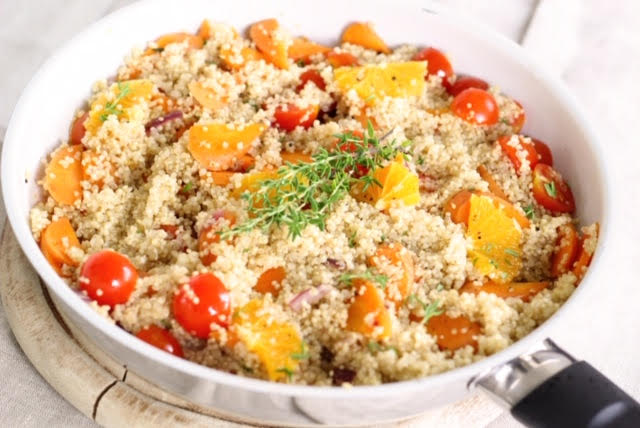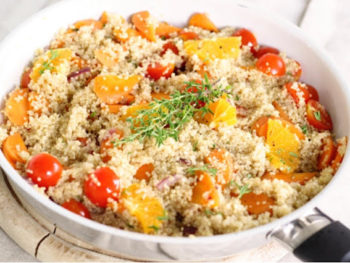In honor of Celiac Disease Awareness Month, I’ve partnered with my pals at Smart LifeBites and contributed this blog post. You can also read it below.
——————————-
Happy May and Celiac Disease Awareness Month. Celiac Disease affects 1 in 100 people worldwide and more than two million Americans are undiagnosed and at risk for long-term health complications. Celiac Disease Awareness Month provides us with an opportunity to learn about celiac disease and the best way to manage it. Celiac disease is an autoimmune disease that can cause damage to the gastrointestinal tract due to the ingestion of gluten. The current recommended treatment is following a gluten-free diet. Luckily, we’ve come a long way in awareness as well as in the array of gluten-free products available. As a registered dietitian nutritionist, I began counseling patients with celiac disease in the late 1990s, very few tasty gluten-free options were available. Today, we have so many delicious–and nutritious–gluten-free options.
Here are 6 tips to live better with celiac disease.
1. Go gluten free
The only treatment for celiac disease is following a strict gluten-free diet. Gluten is a protein found in wheat (including spelt, farro and bulgur), barley and rye. It is found in many products including cereal, grains, pasta and many processed foods. It is also lurking in sauces, seasoning mixes and even vitamins. Going gluten free is a commitment and requires careful checking of products.
2. Choose whole foods
Rather than worry about what not to eat, I suggest people with celiac disease focus on foods they can eat. Eating a diet composed of whole foods such as chicken, fish, legumes, and lots of fresh fruits and veggies is not only gluten-free but also a better choice for optimal health.
3. Choose more fruits and vegetables
Diets high in fruits and vegetables are always best, and a gluten-free diet supports this motto. It’s important, however, to watch out for any additives and seasonings and make sure they are gluten free.
4. Include healthy gluten-free starches
While traditional pasta and wheat bread are off-limits for people with celiac disease, there are lots of grains that are OK to include and are super healthy. For instance, you can eat sweet potatoes, butternut squash, baked potatoes, brown rice, amaranth, quinoa and soba noodles (buckwheat).
5. Read food labels
Luckily, today you can read labels to look for gluten-free products. When the Food Allergen Labeling and Consumer Protection Act went into effect in 2006, people with celiac disease could finally read food labels to determine if a product was OK for them to eat. This act requires all food labels in the United States to list ingredients that may cause allergic reactions.
6. Watch for cross-contamination
Ingesting even small amounts of gluten may trigger damage to the small intestine in people with celiac disease. So watch out for crumbs from the toaster oven or even your favorite cutting board. To stay safe, you’ll want to make sure that your favorite gluten-free products comes from gluten-free facilities.
Every year, there are more and more gluten-free options available on supermarket shelves, on restaurant menus and recipes developed using gluten-free ingredients. If you or someone you know suffers from celiac, take advantage of these healthy options.
For more information, go to the about Celiac Disease Foundation website to learn more about “What is Celiac Disease?”



 My podcast with Bottom Line on America’s food portion problem and the strategies to overcome it
My podcast with Bottom Line on America’s food portion problem and the strategies to overcome it